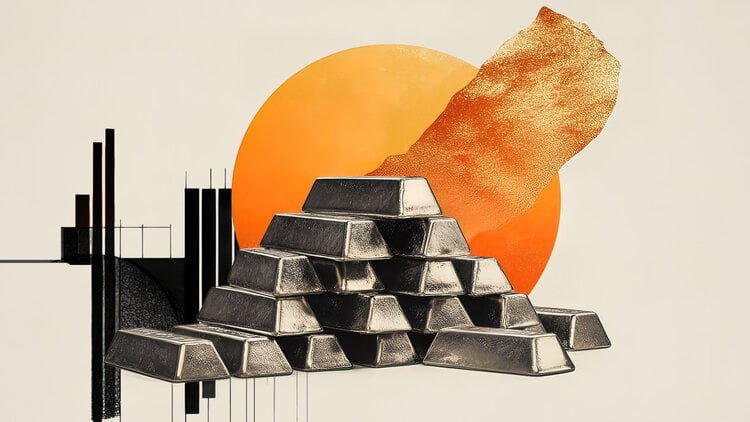- The price of silver earns traction around 36.30 in the first measures of the Asian session on Thursday.
- A lower IPC than expected drives the expectations of cutting fees of the Fed.
- The increase in geopolitical risks could support the price of silver in the short term.
The price of silver (XAG/USD) attracts some buyers around 36.30, breaking the two -day loss streak during Thursday’s Asian negotiation hours. The weakest American dollar (USD) and the growing geopolitical tensions in the Middle East provide some support for white metal. The operators will be attentive to the US Production Price Index (IPP).
Inflation in the US softer than expected in May has led the operators to increase their bets due to a federal reserve rate cut (FED). This, in turn, drags the dollar down and raises the price of the raw material called in USD. The Fedwatch of the CME tool showed that the markets have discounted almost 68% possibility that the US Central Bank It occurs in July compared to approximately 13% earlier on Wednesday.
Reuters on Wednesday that the United States (USA) plans a partial evacuation of its embassy in Iraq and will allow military dependents to leave places in the Middle East, citing safety risks in the region. Geopolitical risks could support the price of silver as investors seek more secure refuge.
On the other hand, the envoy of the White House, Steve Witkoff, is scheduled to meet with Iranian Foreign Minister Abbas Araghchi, in Muscat on Sunday and discuss the Iranian response to the recent US proposal, according to Axios. Any positive development around an agreement on the nuclear program between the USA and Iran could limit the bullish potential for silver.
FAQS SILVER
Silver is a highly negotiated precious metal among investors. Historically, it has been used as a value shelter and an exchange means. Although it is less popular than gold, operators can resort to silver to diversify their investment portfolio, for their intrinsic value or as a possible coverage during periods of high inflation. Investors can buy physical silver, in coins or bullion, or negotiate it through vehicles such as the funds quoted in the stock market, which follow their price in international markets.
Silver prices can move due to a wide range of factors. Geopolitical instability or fears of a deep recession can cause the price of silver to shoot due to its safe refuge status, although to a lesser extent than that of gold. As an asset without performance, silver tends to climb with lower interest rates. Its movements also depend on how the US dollar (USD) behaves, since the asset is quoted in dollars (XAG/USD). A strong dollar tends to maintain the price of silver at bay, while a weaker dollar probably drives rising prices. Other factors such as investment demand, mining – silver supply is much more abundant than gold – and recycling rates can also affect prices.
Silver is widely used in the industry, particularly in sectors such as electronics or solar energy, since it has one of the highest electrical conductivities of all metals, surpassing copper and gold. An increase in demand can increase prices, while a decrease tends to reduce them. The dynamics in US economies, China and India can also contribute to price fluctuations: for the US and particularly China, its large industrial sectors use silver in several processes; In India, the demand for consumers for precious metal for jewelry also plays a key role in pricing.
Silver prices tend to follow gold movements. When gold prices go up, silver typically follows the same path, since their status as shelter is similar. The gold/silver ratio, which shows the number of ounces of silver necessary to match the value of an ounce of gold, can help determine the relative valuation between both metals. Some investors may consider a high ratio as an indicator that silver is undervalued, or that gold is overvalued. On the contrary, a low ratio could suggest that gold is undervalued in relation to silver.
Source: Fx Street
I am Joshua Winder, a senior-level journalist and editor at World Stock Market. I specialize in covering news related to the stock market and economic trends. With more than 8 years of experience in this field, I have become an expert in financial reporting.





